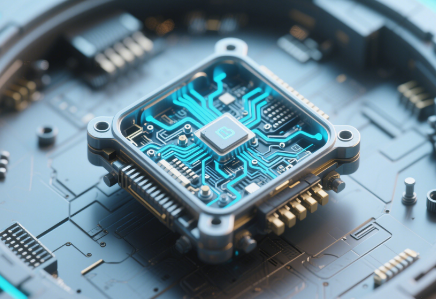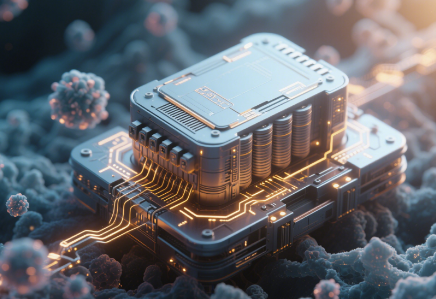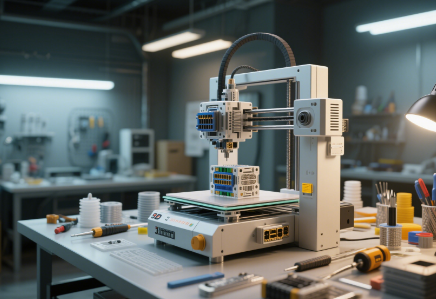Unraveling High - Precision Frequency Regulation in Micro Devices
1/15/2025 5:55:23 PM
In modern tech, micro devices are everywhere, from wearables to microscopes. High - precision frequency regulation is key to their operation, but traditional methods have limits.
Significance of High - Precision Frequency Regulation
Precise Data Handling
Micro devices with complex chips need accurate clock signals. For example, in micro AI computing, precise regulation stops data transfer issues during tasks like image recognition. A small frequency error can lead to big calculation mistakes.
Stable Signals
In IoT, many micro devices communicate wirelessly. High - precision frequency regulation is vital for this. In a wireless sensor network, it helps sensors send data accurately. In a smart home, it enables seamless device communication. Without it, smart home control fails.
Limits of Traditional Methods
Size and Power
Traditional components like quartz oscillators are too big and use too much power for micro devices. They take up space, stopping further miniaturization, and drain batteries quickly. In smartwatches, this limits battery size and life.
Environment Sensitivity
Micro devices face complex environments, and traditional methods are sensitive to factors like temperature and electromagnetic interference. In an industrial setting, sensors with traditional regulation can't collect accurate data.
Inflexible Adjustment
Micro devices often need to change frequencies, but traditional methods can't adjust easily. Some oscillators have fixed frequencies, and those that can adjust have small ranges and complex processes. Wearable sports monitors can't adapt well to different activities.
New Research Breakthroughs
MEMS Innovation
MEMS technology offers hope. MEMS oscillators combine micro - mechanical and electronic parts on a chip, shrinking size and improving performance. They use tiny resonators and are more power - efficient. Their optimized structures reduce environmental effects. In smartphones, they're replacing quartz oscillators.
Quantum Leap
Quantum tech is entering frequency regulation. Quantum frequency standards use atomic or ionic energy levels. While current atomic clocks are large, researchers are working on mini - quantum sources with qubits. These could revolutionize micro device performance, like in GPS and sensing.
Smart Algorithms
AI - driven intelligent algorithms are used for adaptive frequency regulation. In IoT gateways, they adjust frequencies based on network traffic and environment. This improves device efficiency and adaptability.
Diverse Applications
Medical Field
In health, high - precision regulation is crucial. In glucose monitors, it ensures accurate data for diabetes treatment. In ultrasonic diagnostics, it helps with high - resolution imaging for early disease detection.
Industrial Precision
In Industry 4.0, micro devices with this tech are important. In chip manufacturing, high - precision frequency regulation helps with nanometer - level positioning. In CNC machine tools, it enables real - time monitoring and precise machining.
Communication Efficiency
In comms, high - precision regulation is key. In 5G/6G base stations, it ensures accurate signal handling. In satellite comms, it helps terminals connect stably. In data centers, it synchronizes servers for fast data processing.
Challenges and Future
Current Hurdles
Despite progress, there are challenges. Miniaturizing quantum tech is hard due to qubit sensitivity. Intelligent algorithms need better real - time performance and resource use. Compatibility between different regulation techs also needs work.
Future Outlook
The future holds higher precision, lower power, better adaptability, and multi - tech integration. New materials may lead to better components. Combining quantum, MEMS, and AI will create advanced systems. In emerging fields like quantum computing and biosensors, high - precision regulation will drive innovation. As IoT and AI grow, this tech will be everywhere, powering a smarter future.
High - precision frequency regulation is a game - changer for micro devices. Despite challenges, it's set to transform industries and lead us into a more intelligent era.
Significance of High - Precision Frequency Regulation
Precise Data Handling
Micro devices with complex chips need accurate clock signals. For example, in micro AI computing, precise regulation stops data transfer issues during tasks like image recognition. A small frequency error can lead to big calculation mistakes.
Stable Signals
In IoT, many micro devices communicate wirelessly. High - precision frequency regulation is vital for this. In a wireless sensor network, it helps sensors send data accurately. In a smart home, it enables seamless device communication. Without it, smart home control fails.
Function and Performance

Limits of Traditional Methods
Size and Power
Traditional components like quartz oscillators are too big and use too much power for micro devices. They take up space, stopping further miniaturization, and drain batteries quickly. In smartwatches, this limits battery size and life.
Environment Sensitivity
Micro devices face complex environments, and traditional methods are sensitive to factors like temperature and electromagnetic interference. In an industrial setting, sensors with traditional regulation can't collect accurate data.
Inflexible Adjustment
Micro devices often need to change frequencies, but traditional methods can't adjust easily. Some oscillators have fixed frequencies, and those that can adjust have small ranges and complex processes. Wearable sports monitors can't adapt well to different activities.
New Research Breakthroughs
MEMS Innovation
MEMS technology offers hope. MEMS oscillators combine micro - mechanical and electronic parts on a chip, shrinking size and improving performance. They use tiny resonators and are more power - efficient. Their optimized structures reduce environmental effects. In smartphones, they're replacing quartz oscillators.
Quantum Leap
Quantum tech is entering frequency regulation. Quantum frequency standards use atomic or ionic energy levels. While current atomic clocks are large, researchers are working on mini - quantum sources with qubits. These could revolutionize micro device performance, like in GPS and sensing.
Smart Algorithms
AI - driven intelligent algorithms are used for adaptive frequency regulation. In IoT gateways, they adjust frequencies based on network traffic and environment. This improves device efficiency and adaptability.
Diverse Applications
Medical Field
In health, high - precision regulation is crucial. In glucose monitors, it ensures accurate data for diabetes treatment. In ultrasonic diagnostics, it helps with high - resolution imaging for early disease detection.
Industrial Precision
In Industry 4.0, micro devices with this tech are important. In chip manufacturing, high - precision frequency regulation helps with nanometer - level positioning. In CNC machine tools, it enables real - time monitoring and precise machining.
Communication Efficiency
In comms, high - precision regulation is key. In 5G/6G base stations, it ensures accurate signal handling. In satellite comms, it helps terminals connect stably. In data centers, it synchronizes servers for fast data processing.
Challenges and Future
Current Hurdles
Despite progress, there are challenges. Miniaturizing quantum tech is hard due to qubit sensitivity. Intelligent algorithms need better real - time performance and resource use. Compatibility between different regulation techs also needs work.
Future Outlook
The future holds higher precision, lower power, better adaptability, and multi - tech integration. New materials may lead to better components. Combining quantum, MEMS, and AI will create advanced systems. In emerging fields like quantum computing and biosensors, high - precision regulation will drive innovation. As IoT and AI grow, this tech will be everywhere, powering a smarter future.
High - precision frequency regulation is a game - changer for micro devices. Despite challenges, it's set to transform industries and lead us into a more intelligent era.




